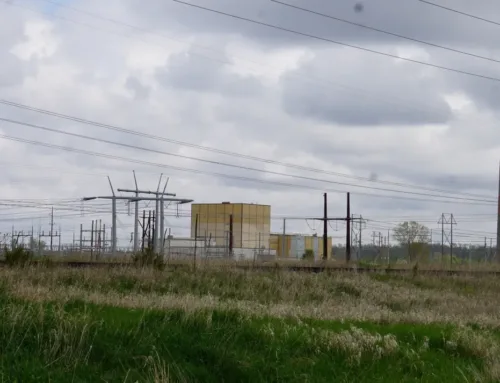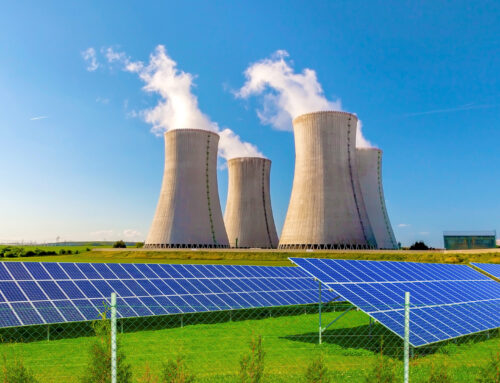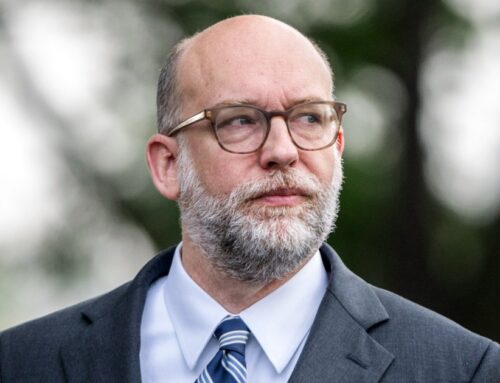Environmentalists and clean energy advocates decry Duke’s proposed Carbon Plan
October 1, 2025
Wednesday morning, Duke Energy filed its updated plan to reduce carbon pollution and meet growing energy demand. In most scenarios, the company modeled, emissions for its Carolinas operations will increase through the mid-2030s, according to Duke’s analysis:
“As load continues to increase over time, the total emissions of the system rise until the late 2030s as solar deployments continue and nuclear begins contributing significant volumes of incremental emissions of free energy.”
Glen Snider, Duke’s managing director for the plan, said the utility still aims to attain net neutrality by 2050, despite making large near-term investments in natural gas plants. Those plants would need to switch to hydrogen fuel or implement carbon sequestering technology to keep the plan on track.
“There’s just a couple of technologies that we see on the horizon that will allow us to continue on a trajectory towards net zero by 2050,” Snider said.
Neither technology is currently feasible in North Carolina.
Duke stalls on cutting emissions
Environmental groups and clean energy advocates are concerned about delays in renewable energy production and the increased role that fossil fuels could play over the next 15 years.
Matt Abele, CEO of the N.C. Sustainable Energy Association and a member of the state Energy Task Force, said that while Duke’s continued investment in battery storage is “promising,” the plan falls short on saving customers money and decommissioning “uneconomic resources,” such as coal plants. Duke proposes to continue burning coal through 2040 while the utility develops new nuclear reactors.
“It’s imperative that our utilities consider every generation resource possible in the near-term, like solar and wind, to meet new substantial demand for electricity, while keeping rates low for households across the state,” Abele said in a written statement.
Duke projects rates to increase an average of 2.1% annually over the next decade under the proposed plan, which is lower than the last approved resource plan.
Mikaela Curry, Sierra Club Beyond Coal campaign manager, found the updated plan “disappointing and unsettling” because it delayed coal retirement. She pointed to incoming data centers that are projected to consume an increasing percentage of the Carolinas’ overall energy demand. Duke Energy anticipates an additional 47,331 gigawatt-hours in economic growth by 2036 — nearly 50 times the annual energy consumption of New York City.
The price of ‘flexibility’
In response to concerns about increased coal combustion emissions, Duke’s Glen Snider said these plants usually run when demand is high.
“The coal plants are not running at significant capacity factors, so it’s not as impactful as you might think,” Snider said. “Having that flexibility to defer just a couple of the units helps ensure near-term reliability.”
Environmental nonprofit CleanAIRE NC criticized the utility for not including historically marginalized communities in the planning process.
“These communities face some of the highest energy burdens in the state and are often among those most affected by fossil fuel-related pollution,” said Brittany Griffin, advocacy manager at CleanAIRE NC.
Energy experts have pointed out that much of the projected growth surrounding data centers is speculative, with companies placing bids in multiple states for the same project. The utility might also avoid investing in some new infrastructure by shifting demand during peak hours.
“We’re concerned that regulated monopoly Duke Energy is continuing to rely on expensive new gas power plants, leaving North Carolina families on the hook for escalating fuel costs and making it harder to reach the 2050 carbon neutrality requirement,” David Neal, a senior attorney at the Southern Environmental Law Center, said in a written statement.
“Duke yet again appears to have fallen short of taking full advantage of energy efficiency, load flexibility, renewables, and storage, which remain the cheapest and fastest suite of options for meeting rising demand.”
SUPPORT LOCAL NEWS
WFAE remains committed to our mission: to serve our community with fact-based, nonpartisan journalism. But our ability to do that depends on the strength of the financial response from the communities we serve. Please support our journalism by contributing today.
Search
RECENT PRESS RELEASES
Related Post




